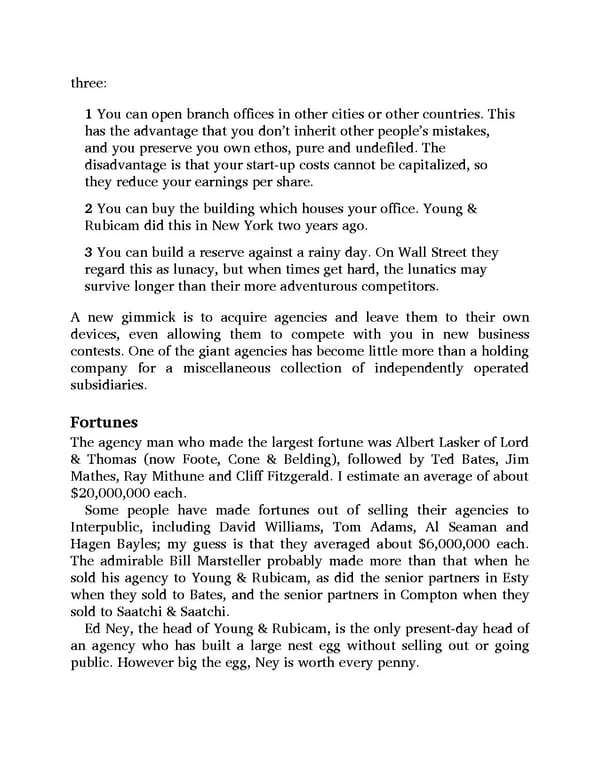three: 1 You can open branch offices in other cities or other countries. This has the advantage that you don’t inherit other people’s mistakes, and you preserve you own ethos, pure and undefiled. The disadvantage is that your start-up costs cannot be capitalized, so they reduce your earnings per share. 2 You can buy the building which houses your office. Young & Rubicam did this in New York two years ago. 3 You can build a reserve against a rainy day. On Wall Street they regard this as lunacy, but when times get hard, the lunatics may survive longer than their more adventurous competitors. A new gimmick is to acquire agencies and leave them to their own devices, even allowing them to compete with you in new business contests. One of the giant agencies has become little more than a holding company for a miscellaneous collection of independently operated subsidiaries. Fortunes The agency man who made the largest fortune was Albert Lasker of Lord & Thomas (now Foote, Cone & Belding), followed by Ted Bates, Jim Mathes, Ray Mithune and Cliff Fitzgerald. I estimate an average of about $20,000,000 each. Some people have made fortunes out of selling their agencies to Interpublic, including David Williams, Tom Adams, Al Seaman and Hagen Bayles; my guess is that they averaged about $6,000,000 each. The admirable Bill Marsteller probably made more than that when he sold his agency to Young & Rubicam, as did the senior partners in Esty when they sold to Bates, and the senior partners in Compton when they sold to Saatchi & Saatchi. Ed Ney, the head of Young & Rubicam, is the only present-day head of an agency who has built a large nest egg without selling out or going public. However big the egg, Ney is worth every penny.
 Ogilvy on Advertising Page 79 Page 81
Ogilvy on Advertising Page 79 Page 81